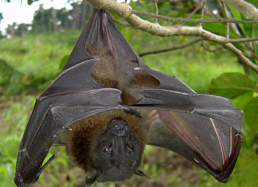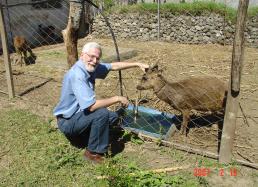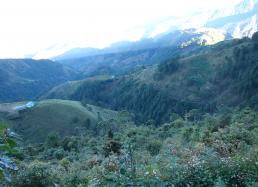About the Expedition
The Philippine Islands have been called “the Galapagos times ten" because of their extraordinatry concentration of biological diversity. Geologically isolated from mainland Asia for millions of years, these islands are home to more endemic species—native plants and animals restricted to a specific habitat—than most anywhere else in the world. Astoundingly, more than 75% of its nearly 200 known mammal species are unique to these secluded islands, and many new species are still being discovered!
The Philippine Mammal Project
Since 1988, the Field Museum has been the primary base of operations for the Philippine Mammal Project, a multi-institutional, international collaborative effort led by Dr. Larry Heaney. His team conducts field surveys of mammals (and other organisms) in carefully selected parts of the country to document the number and distribution of island species. The project objective is to develop a broad understanding of how the Philippines' exceptionally high level of biological diversity has evolved, how it is maintained under natural ecological circumstances, and how it can be most effectively conserved in the face of the many and severe challenges it faces.
Surving the Central Cordillera
In 2000, the team began surveying sites within the Central Cordillera, a mountain range on northern Luzon Island that has the highest concentration of mammal species of any place in the country. The Central Cordillera is not only critically important to native mammals, but also to the island's human population, who rely on its headwaters to supply rivers that provide much of the water for drinking, industrial use, and irrigating the country’s crucial rice crop. In addition, the rainforests that cover these mountains act like giant sponges, preventing devestating floods downstream by absorbing the torrential rainfall from annual typhoons.
The 2008 Mt. Pulag Expedition
In 2008, Dr. Heaney’s team conducted the first biological survey of the mammals of Mt. Pulag National Park, located within Luzon's Central Cordillera range. The park itself covers about 44.40 square miles (115 km2) and is the site of the island's highest peak, measuring 9,725 feet (2,930 m) in elevation. The team concentrated their efforts in the remote "cloud forest" that crowns the mountaintop above 8,530 feet (2,600 m)—a foggy, saturated habitat ranging from elfin moss-covered woodlands to subalpine bamboo grassland that had never before been sampled.
During their survey, the team witnessed first-hand the extent of commercial vegetable farming that has decimated the park, but they also located patches of untouched forests and rediscovered a species thought to have been extinct for more than 100 years! Other triumphs included training park staff in how to monitor wildlife, developing a set of information about natural history to promote eco-tourism within the park, and providing a set of specific recommendations about how to reduce the damage done by farming.
To learn more about the amazing wildlife of the Philippines and the threats they face, explore the stories in "About the Expedition," and be sure to check out Dr. Heaney's photo galleries, videos, and blogs from his 2008 expedition.




